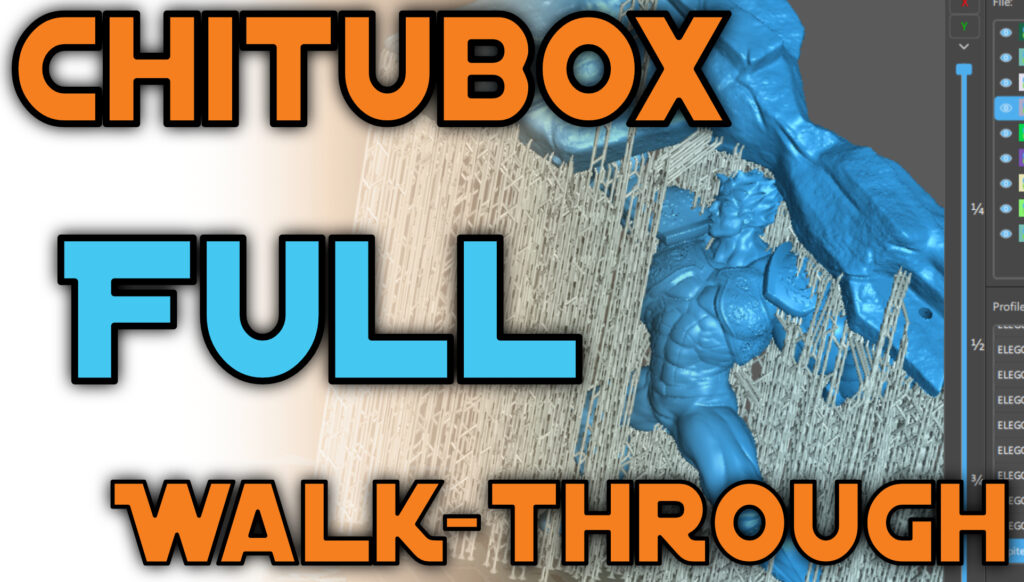SLA Printer – What is it? – Pt 01 3D Printing Basics
This guide includes diagrams, FEP sheet replacement instructions, Parts and motherboard explanations, troubleshooting tricks, cleaning, maintenance, settings, firmware + Bonus Resin Scoop and much more.
What is It?
Unlike FDM printers, SLA one’s function quite differently depending on the type that you’re using. In today’s article, well go over the basics of what an SLA printer is and how it works.
Although there are multiple types of resin printers, today we’ll be focusing on SLA one’s since these are the most common types found in households. These types of printer’s can actually come in 3 different varieties, with the most affordable being the LCD based version. All of these printers use a resin which cures when exposed to a UV light and stores this resin within a container called a vat. The vat itself has a transparent film on the bottom, which allows the resin to be exposed to the light source. DLP, also known as digital light processing, uses a Projector to expose the resin to UV light. LCD or MSLA resin printer’s, use a UV light source in conjunction with an LCD to help cure the resin. Both DLP and LCD printers, cure each layer simultaneously, making them faster when fully utilizing the build plate. Although the term SLA is used as an umbrella term for all of these types, it’s more specifically used to describe stereolithography based printers which use a laser to cure the resin. While these laser printers can potentially produce better levels of details, they can take much longer to complete depending on how much of the build plate is being utilized. Almost all the lower cost resin printers on the market today will be the LCD or MSLA printers, so these will be the ones we’ll be covering today.
The best way to understand LCD resin printers, is to see them as working similar to screen printing. Each object is made up of several different layers of exposed resin. Each layer is created by shinning a UV light source through the base of the machine, while the LCD masks out any areas which shouldn’t be exposed. This means that it can cure many objects simultaneously without taking additional time. As each layer is cured, the machine will lift before going back down into the next position for the next layer. Originally these printers used RGB screens which were similar to that of a tablet but because of the efficiency, speed and longevity, they have since been replaced with mono screens for the most part. The RGB stands for the Red, Green and Blue filters which create a black mask, while the mono screen uses just the one layer instead. These new screens allow more of the UV light through because it doesn’t need to go through as many filters. RGB screens create coloured images, while the mono one only create a grey scale one.
The layer thickness, determines the resolution of the print it in the Z axis. The resolution of the X and Y are determined by the screen resolution. Although many machines are described as being 2k or 4k in resolution, a better method of determining the potential of the machine is to calculate the pixels per inch instead. IF you have a 4k screen that’s 8 x 6 inches and boasts a pixel count of 3840×2160, this will actually be a lower resolution than a 5 x 3 inch display with the same pixel density. The reason for this is that you are dividing the pixels to the overall size of the screen. So in order to get a measurement that’s easier to compare, you divide the pixel count by the size instead. Not all companies will readily make this information available, but a quick search on the manufacturer’s website can normally give you the number’s to calculate this.
Safety is a high priority when dealing with these machines, and that’ll be something we’re going to cover more thoroughly in the next article. When that one’s made available, you will see the link HERE.
Personal Notes
Screen Types
- RGB = Red + Green + Blue = Colour
- Mono = Black Opaque = Greyscale
Resolution
- Pixels per inch
- Pixel size ÷ size in inches
Yasmeen completed both the 2D and 3D animation course at Algonquin College and worked in the animation industry as a freelancer for a number of years before being hired to manage the 3D printing services at ItsYeBoi. While using the Alias of "Jenny" during her services, she was responsible for the testing, maintenance and upgrading of the machine while also filming and developing 3D printable assets for various projects.

